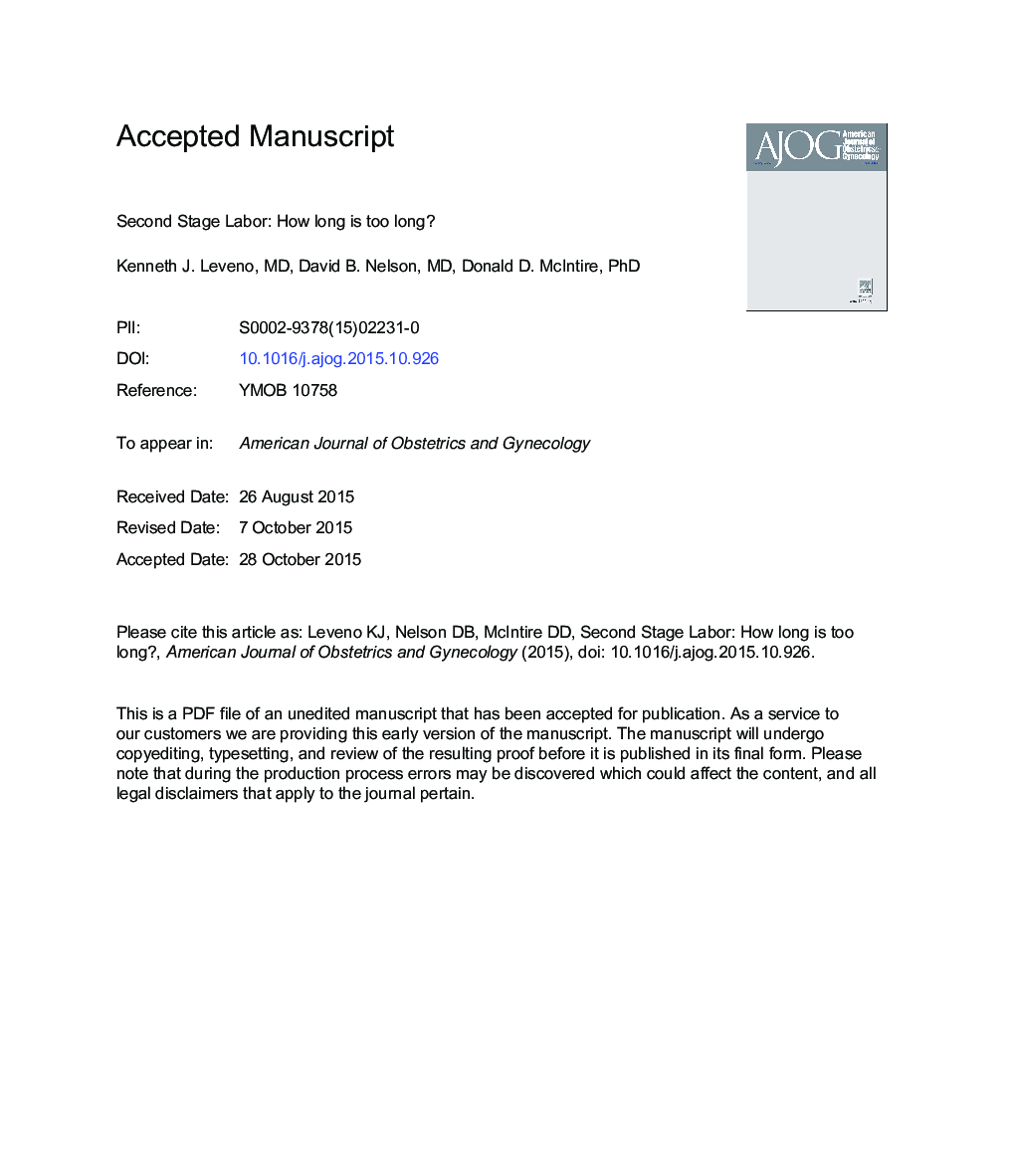| Article ID | Journal | Published Year | Pages | File Type |
|---|---|---|---|---|
| 6144113 | American Journal of Obstetrics and Gynecology | 2016 | 22 Pages |
Abstract
The management of labor has come under increased scrutiny due to the rapid escalation of cesarean delivery in the United States. A workshop of the Society for Maternal-Fetal Medicine, the Eunice Kennedy Shriver National Institute of Child Health and Human Development, and the American Congress of Obstetricians and Gynecologists was convened to address the rising cesarean delivery rates and one of their recommendations was that the accepted upper limit of the second stage of labor should be increased to â¥4 hours in nulliparous women with epidural analgesia and to â¥3 hours in parous women with epidural. This led to the inaugural Obstetric Care Consensus series document, “Safe Prevention of the Primary Cesarean Delivery,” wherein the workshop recommendations on second-stage labor were promulgated nationally. The result is that the now acceptable maximum length of the second stage of labor exceeds the obstetric precepts that have been in use for >50 years. In this Clinical Opinion, we review the evidence on infant safety, vis-à -vis length of the second stage of labor. Our examination of the evidence begins at the outset of the 20th century and culminates in the very recent (2014) recommendation to abandon the long accepted obstetric paradigm that second-stage labor >3 hours in nulliparous women with labor epidural is unsafe for the unborn infant. We conclude that the currently available evidence fails to support the Obstetric Care Consensus position that longer second-stage labor is safe for the unborn infant. Indeed, the evidence suggests quite the opposite. We suggest that when infant safety is at stake the evidence should be robust before a new clinical road is taken. The evidence is not robust.
Keywords
Related Topics
Health Sciences
Medicine and Dentistry
Medicine and Dentistry (General)
Authors
Kenneth J. MD, David B. MD, Donald D. PhD,
